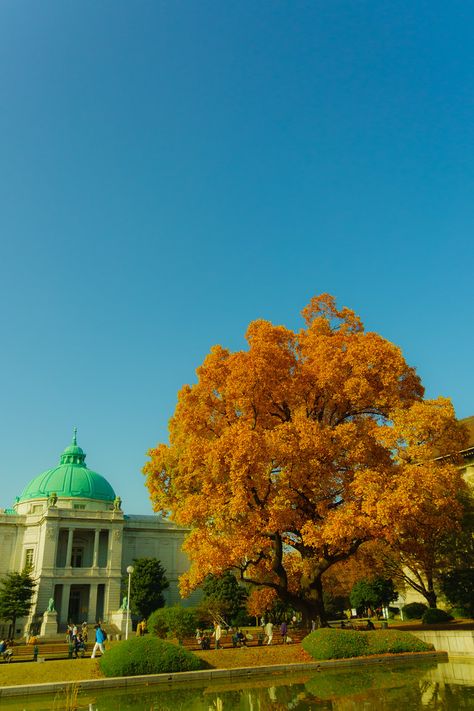
Tokyo National Museum Main Page
General Info

| Country | Japan |
|---|---|
| Place Name | Tokyo National Museum |
Overview
Tokyo National Museum or TNM is Japan's oldest and largest art museum, an iconic location in Tokyo's Ueno Park. With a vast collection of over 110,000 exhibits, including several of Japan's national treasures and important cultural properties, TNM is a must-see for anyone who wants to experience and understand the richness of Japanese culture and history.
The museum combines Japan's past and present and offers many exhibits throughout the year. Exhibits include various art fields such as archaeology, sculpture, painting, calligraphy, ceramics, textiles, armor, etc.
Explorations do not end within the walls of the museum. The Tokyo National Museum also has a beautiful traditional Japanese landscaped garden with teahouses where visitors can watch the tea ceremony. Bridging the gap between appreciation and immersion, TNM is a true art and heritage treasure.
History
Tokyo National Museum or TNM is the oldest and largest museum in Japan, dating back to 1872. It is located in Ueno Park in Tokyo's Taitō Ward. With an impressive collection of over 110,000 individual objects, including nearly 90,000 national treasures and important cultural assets, the museum is an important pillar in the preservation of Japanese art and archaeology.
The founding of the
Tokyo National Museum can be traced back to the Yushima Seido Exhibition held in 1872, which featured a variety of educational materials. The success of the exhibition led to the creation of the Ministry of Education Museum, which is considered the forerunner of the Tokyo National Museum.
In later years, due to natural disasters and the growth of the collection, the museum underwent many transitions and relocations. Only in 1938 the museum was officially named the Tokyo National Museum and moved to its current location in Ueno Park.
- 1882 the museum moved to Ueno Park and opened the Honkan (main gallery).
- Hyokeikan building was completed in 1932, followed by Kuroda Memorial Hall in 1928.
- 1938 the museum got its current name - Tokyo National Museum.
- 1968 The Heiseikan building and Toyokan were opened to the public.
- Horyuji Homotsukan, also known as Horyuji Treasure Gallery, was added to the complex in 1999.
Today, the Tokyo National Museum proudly symbolizes Japan's rich cultural and artistic history and attracts scholars, art lovers and tourists from around the world.
Geography and Natural Features
Tokyo National Museum, located in Ueno Park in Tokyo's Taitō Ward, is surrounded by a unique combination of geography and natural splendor. The museum is accessible via Ueno Station, which is also the gateway to many of the city's other cultural attractions, demonstrating the interconnectedness of Tokyo's urban fabric.
The museum is located in the middle of Tokyo's bustling cityscape, a perfect blend of nature and urbanization. The campsite has wide walking paths, picturesque gardens and ponds that offer a peaceful environment away from the hustle and bustle of everyday city life.
Ueno Park, home to the museum, has many other museums in addition to the Ueno Zoo, reflecting the area's commitment to preserving culture and wildlife. The nearby Shinobazu Pond is home to a variety of bird species throughout the year, demonstrating Tokyo's commitment to conservation even in the heart of the city.
Tokyo's varied geography, from its vast plains to its many hills and rivers, is also reflected in the museum's collections. From ancient maps to precious geological specimens, visitors can see how Japan's natural resources and geography have played an important role in the country's development.
The Tokyo National Museum not only showcases Japanese culture and history, but also beautifully embodies Tokyo's unique geography, creating a harmonious blend of history, art, culture and nature that perfectly reflects the cosmopolitan city in which it is located.
Influence and Legacy Features
Tokyo National Museum or TNM holds an influential position in Japan and the world. The Beacon of Culture and History presents Japan to the world through a large and diverse collection of art and antiquities. With more than 110,000 items, including 87 Japanese national treasures and 610 important cultural properties, its cultural impact is undeniable.
During its lifetime, TNM has educated and inspired generations. Scientists, artists and visitors from all over the world are fascinated by the exhibits. The museum's dedication to preserving Japan's cultural heritage has ensured a legacy of traditional Japanese art forms, from ancient Buddhist ceramics and sculptures to Ukiyo-e prints and samurai armor.
- Ukiyo-e - These prints greatly influenced European artists such as Van Gogh and Monet, thus beginning an artistic dialogue between East and West.
- Samurai Armor - Carefully crafted armor reveals Japan's feudal past and the samurai code, Bushido.
- Buddhist sculptures - artifacts from different eras have highlighted the role of Buddhism in shaping Japan's cultural and artistic landscape.
TNM doesn't just show artifacts; brings history to life and encourages understanding and appreciation of Japan's rich and vibrant culture. Its influence and historical characteristics not only preserve the past, but also shape the future of Japan and world heritage.
References
TrendingFan Content
So far, there is no trending fan content for this particular universe. Explore all available content and find something you might like!
